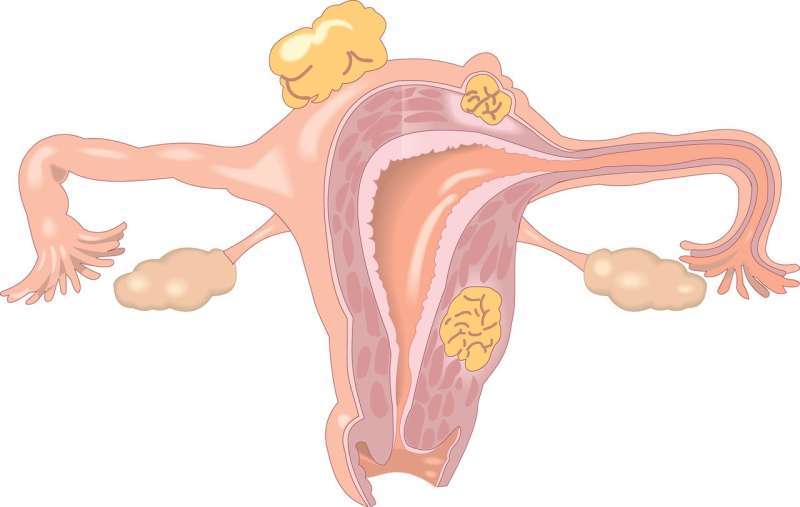Transplant of ovarian tissue frozen years ago holds hope of life

Ovarian tissue that was frozen a decade ago was implanted last week in a 25-year-old cancer survivor who hopes that reviving the tissue from suspended animation will allow her to start a family.
The procedure - which involves myriad disciplines in medicine, cell biology and surgery - is known as an ovarian transplant and was performed at NYU Winthrop Hospital in Mineola, marking a series of "firsts."
It was the first ovarian transplant on Long Island, the first performed anywhere on an outpatient basis and the first such transplant to involve a surgical robot.
A team accomplished the two-hour procedure recently, led by Dr. Kutluk Oktay, the surgeon-scientist who was the first in the world to perform the technique nearly two decades ago at New York Methodist Hospital in Brooklyn, now part of the NewYork-Presbyterian Regional Hospital network. This time around, the multi-armed Da Vinci surgical robot was instrumental in the transplant.
"I developed the procedure and my first case was in 1999; it was published in the New England Journal of Medicine," said Oktay, an attending physician at NYU Winthrop and a leading expert in the field of fertility preservation. He also is a professor of obstetrics, gynecology and reproductive sciences at Yale University School of Medicine.
He studied with scientific teams in this country and abroad to create a method of preserving fertility for young women diagnosed with cancer and at risk of never having children. Harsh cancer therapies induce menopause, and hence infertility.
The good news: About 90 babies have been born via ovarian transplants since the early 2000s.
Oktay's patient at NYU Winthrop, whom he has known since 2007, did not want to disclose her name. But she gave her doctor permission to convey highlights of her long and arduous medical journey.
"She was diagnosed with leukemia when she was 15, which required a bone marrow transplant. Patients receive huge doses of chemo and radiation, which can wipe out all of the eggs," Oktay said. "Prior to her leukemia treatment, I removed one of her ovaries, which contained all of the immature eggs at that time."
Ovaries are twin reproductive organs, each about the size of a walnut, that produce ova, or egg cells. Each egg cell possesses 23 chromosomes, which is the maternal half of a baby's full genetic dowry of 46. Each parent donates 23 at the moment of conception.
In 2007, key portions of the patient's surgically removed ovary were finely cut into what the doctor described as 15 to 20 "slivers" - super-thin grafts of ovarian tissue that were preserved by freezing .
Each graft, Oktay explained, was treated with the cryoprotective agent dimethyl sulfoxide, or DMSO, which prevents crystal formation in cells. Left untreated, ice crystals would form and puncture the cells, rendering them useless.
"You don't want to freeze the whole ovary," Oktay said. "The immature eggs are on the surface, so we peel off that layer. This is what we cut into tiny slivers."
Each sliver was placed in small vials about the size of a lipstick tube and then into canisters that were placed in a liquid nitrogen chamber. The temperature can be dropped to an otherworldly minus 140 degrees Celsius, which is about minus 220 degrees Fahrenheit, nearly as cold as the surface of Jupiter.
"We use a program of slow-freezing, slowly bringing down the temperature," Oktay said. "We use slow freezing so there is no shock to the cells."
The cryopreserved specimens can remain indefinitely in a state of suspended animation and thawed when women are ready for them. The grafts were stored at Manhattan CryoBank, a cell and tissue repository.
Oktay's patient contacted him recently to begin the process, which is geared toward restoring ovulation and the flow of reproductive hormones.
"She has gotten married and wants to start a family," Oktay said. "So we are trying to help her."
For Oktay, perfecting a method to preserve fertility for women who have had cancer is the result of years of effort. He studied with researchers in Britain before working with patients in Brooklyn, and also while on staff at Weill Cornell Medical Center in Manhattan.
Adding the Da Vinci robot to the procedure is new and allows the tissue grafts to be introduced into the patient through a smaller incision via the robot's tiny "hands." Oktay implanted about 14 of the preserved grafts into his patient's remaining, menopausal ovary.
Fertility doctors worldwide have long suggested that the technique has possibilities for women with other medical conditions that have debilitating therapies, or for women who want to postpone childbirth.
Rosaria Ruttenber, 39, who was treated twice for Hodgkin's disease, a cancer of the lymphatic tissue, said ovarian transplantation worked perfectly. Her daughter, Juliana, was born in 2014.
Ruttenber, who lives in Norwalk, Connecticut, said her right ovary was removed 16 years ago and cryopreserved before she underwent cancer treatment when she was 23. Through in vitro fertilization, her preserved eggs were merged with her husband's sperm. The couple now has seven cryopreserved embryos.
"It has been a long road and well worth it. Looking back, I am glad we did it," said Ruttenber, who is looking forward to trying for a second child.
©2017 Newsday
Distributed by Tribune Content Agency, LLC.
















